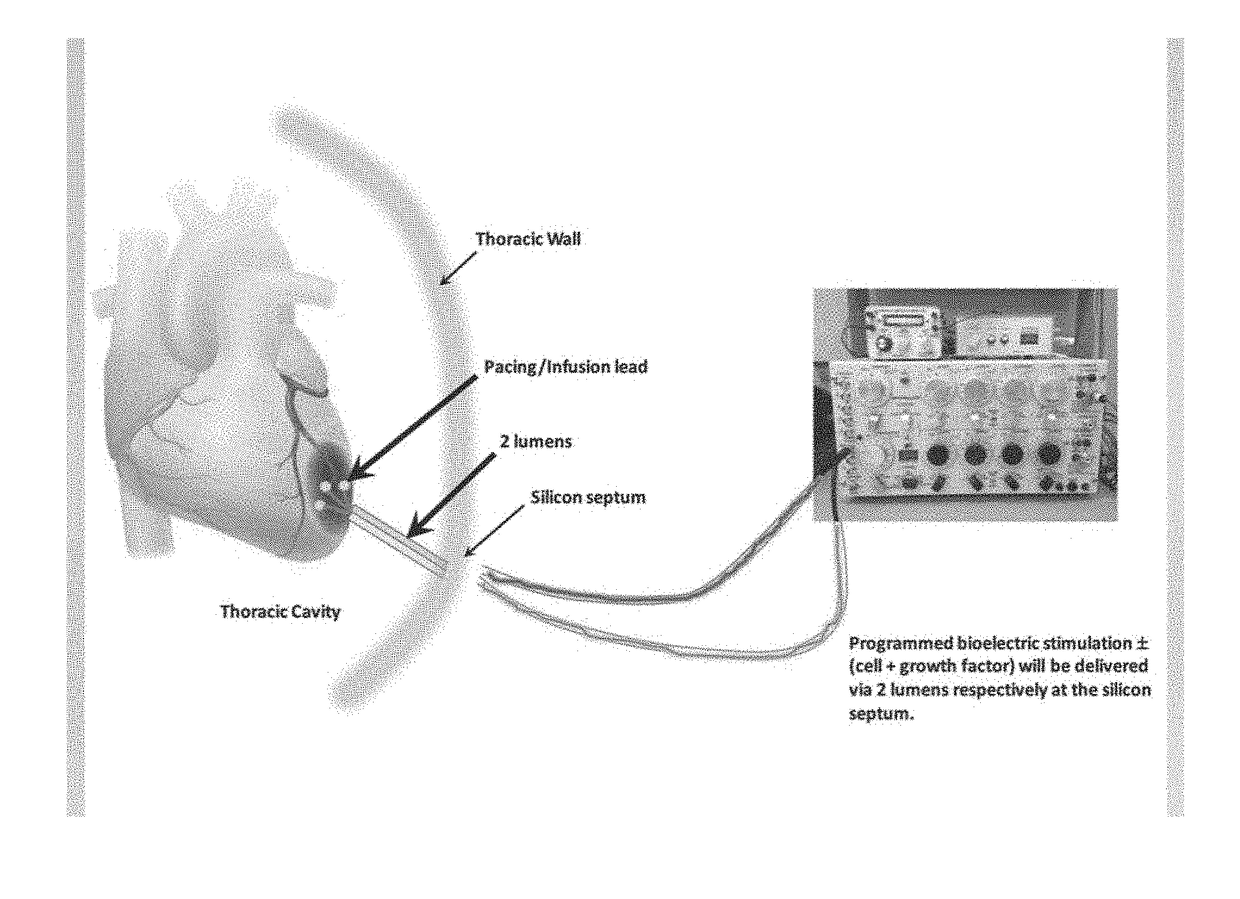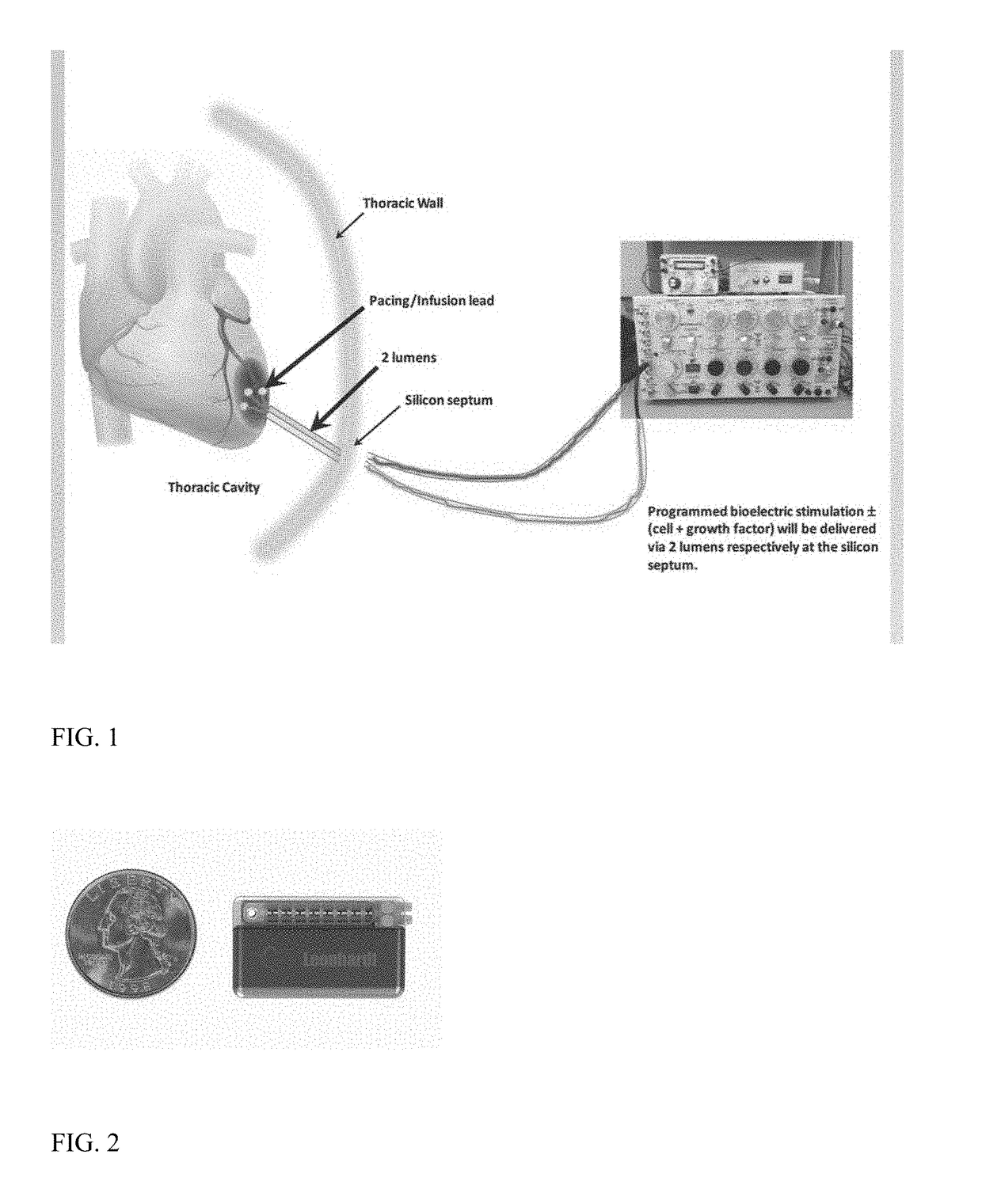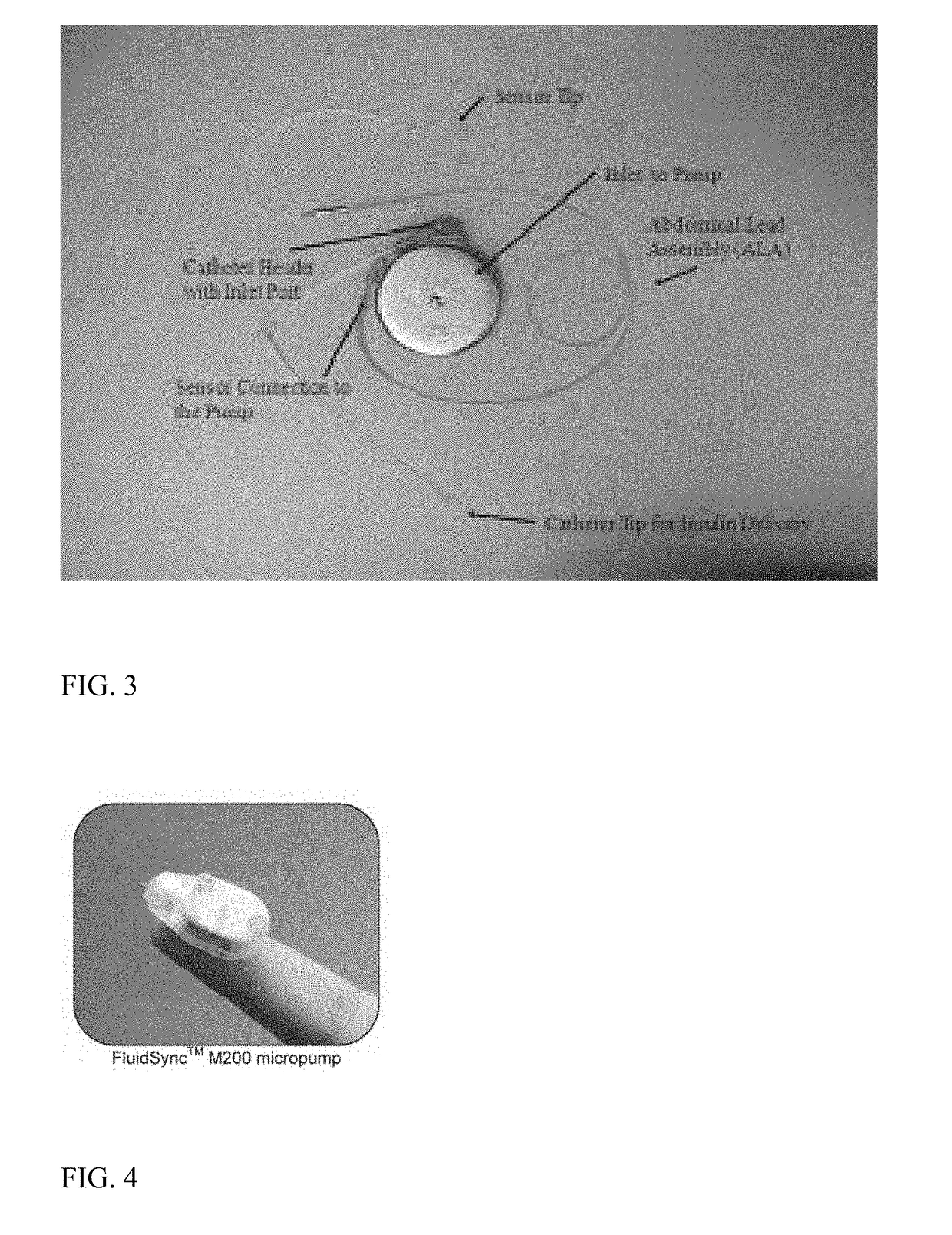Bioelectric stimulator
a bioelectric stimulator and electrode technology, applied in the field of medical devices, can solve the problems of erectile dysfunction, heart failure, electrical disturbance of heart tissue,
- Summary
- Abstract
- Description
- Claims
- Application Information
AI Technical Summary
Benefits of technology
Problems solved by technology
Method used
Image
Examples
examples
Example—Controlling Expression of Follistatin
[0192]Low voltage pulsed electrical stimulation device for controlling expression of follistatin, a muscle formation promotion protein, from tissues.
[0193]Epicardial stimulation is especially useful for heart regeneration.
[0194]In one embodiment, the system stimulates the controlled production / release of follistatin, a known myostatin inhibitor, thus promoting the formation of new muscle and repair of damaged or weakened muscle including heart muscle post heart attack. Follistatin-like 1 (FSTL1) is a protein that encourages the growth of healthy cells, contractile muscle tissue and even blood vessels, helping supply the newly created muscle tissue with oxygen and nutrients. This therapy was originally designed to reduce or eliminate scarring of the heart following a heart attack and reversing heart failure, but may also be applicable to treating other organs suffering from muscle loss or degradation.
[0195]The electrical stimulation device...
example
[0356]In bioelectric stimulation tissue studies, a 2000% and increase in IL-6 was achieved. IL-6 is a key promoter of regeneration. With respect to IL-6, Mosteiro et al. (2016) shows that tissue damage is a relevant factor for cells to go back to an embryonic state. Nobel Prize winner Shinya Yamanaka opened the door to regenerative medicine by cell reprogramming, based on introducing a combination of four genes known as OSKM (for genes, OCT4, SOX2, KLF4, and MYC), which reverts adult cells to an embryonic-like state, and transforms these cells into pluripotent cells. Cell reprogramming was later achieved within a living organism (i.e., a mouse) in 2013.
[0357]Mosteiro et al. (2016) analyzes what happens in living tissues when reprogramming is induced using OSKM. OSKM was found to be inefficient at inducing reprogramming or pluripotency in the highly specialized cells that constitute adult tissues. Tissue damage plays a critical role by complementing the activity of the OSKM genes.
[03...
PUM
| Property | Measurement | Unit |
|---|---|---|
| voltages | aaaaa | aaaaa |
| voltage | aaaaa | aaaaa |
| frequency | aaaaa | aaaaa |
Abstract
Description
Claims
Application Information
 Login to View More
Login to View More - R&D
- Intellectual Property
- Life Sciences
- Materials
- Tech Scout
- Unparalleled Data Quality
- Higher Quality Content
- 60% Fewer Hallucinations
Browse by: Latest US Patents, China's latest patents, Technical Efficacy Thesaurus, Application Domain, Technology Topic, Popular Technical Reports.
© 2025 PatSnap. All rights reserved.Legal|Privacy policy|Modern Slavery Act Transparency Statement|Sitemap|About US| Contact US: help@patsnap.com



